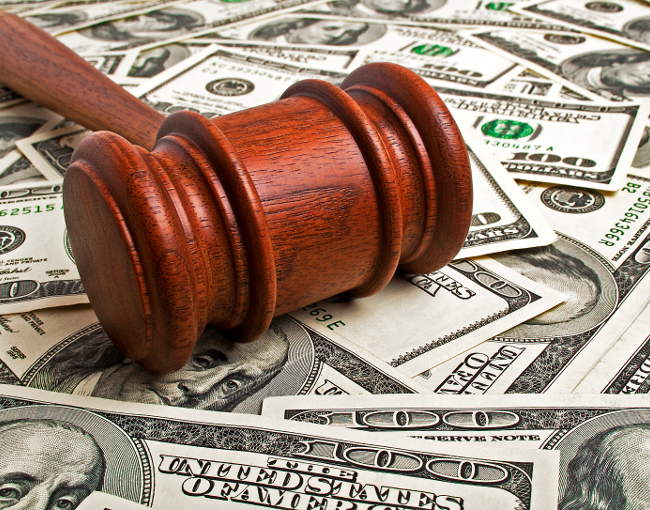Following the publishing of this article, on June 7, 2022, the House of Representatives passed the Bankruptcy Threshold Adjustment and Technical Corrections Act with wide bipartisan support (392-21). On June 21, 2022, President Biden signed the bill into law (PL 117-151).
On April 28, 2022, Central District of California Bankruptcy Judge Ernest M. Robles issued a decision regarding the eligibility of a debtor to proceed as a Small Business Debtor under Subchapter V of the Bankruptcy Code. In the decision, Judge Robles determined that the debtor, Phenomenon Marketing & Entertainment, LLC (“Phenomenon”), was not eligible to proceed as a small business debtor since at least two of the debtor’s affiliates were “issuers” under the Securities Exchange Act of 1934 (“Exchange Act”). The decision highlights an issue first identified by the authors in a featured cover story published in the February issue of American Bankruptcy Institute Journal titled Not So Technical: A Flaw in the Cares Act’s Correction to “Small Business Debtor.”
SBRA and technical issue with Subchapter V eligibility
The Small Business Reorganization Act of 2019 (the “SBRA”) precludes publicly-traded companies from proceeding under subchapter V by excluding from the definition of small business debtor “any debtor that is a corporation subject to the reporting requirements under section 13 or 15(d) of the Securities Exchange Act of 1934.”[1] The Coronavirus Aid, Relief and Economic Security Act (the “CARES Act”) amended the SBRA to further limit subchapter V eligibility by precluding “any debtor that is an affiliate of an issuer.”[2] By using the phrase “an issuer,” which the Exchange Act broadly defines as “any person who issues or proposes to issue any security”, without any reference to the issuer being subject to the Exchange Act’s “reporting requirements,” the Bankruptcy Code not only makes ineligible for subchapter V publicly-traded companies and affiliates of publicly-traded companies, but also facially disqualifies non-public companies simply because they have an affiliate that issued a security.
Issue with statutory language and attempts to address the issue
In the Article, we proposed a solution by which Congress could alleviate the potential over-exclusion of debtors from subchapter V by striking the phrase “of an issuer” and inserting “any debtor that is an affiliate subject to the reporting requirements under section 13 or 15 (d) of the Exchange Act of 1934 (15 U.S.C. 78m, 78o (d))”[3], which is the language used in § 101(51D)(B)(ii) and §1182(1)(B)(ii). Seemingly spurred by our article, on March 14, 2022, Senator Charles Grassley (R- Iowa) introduced the bipartisan Senate Bill 3823, titled “Bankruptcy Threshold Adjustment and Technical Corrections Act” (the “Technical Corrections Act”). Senators Richard J. Durbin (D-IL), Senator Sheldon Whitehouse (D-RI) and Senator John Cornyn (R-TX) co-sponsored the legislation. On April 7, 2022, the bill passed the Senate via unanimous consent. On April 11, 2022, the bill was presented to the House of Representatives, which as of this writing has taken no further action.
The Technical Corrections Act’s most notable aspect is to restore the debt limit for small businesses electing to file under subchapter V at $7.5 million for an additional two years (this higher debt limit provision was initially included in the CARES ACT but expired on March 27, 2022).[4] The initial version of the Technical Corrections Act, as introduced, would have made this increased debt limit permanent, but the bill was subsequently amended in the Senate to only provide for a two year extension from the date of enactment. The bill also included other technical amendments to the Bankruptcy Code, including the technical correction we suggested in the ABI Journal Article.
Phenomenon Marketing & Entertainment, LLC decision
In his decision, Judge Robles conducted a careful analysis of the SBRA, as amended by the CARES Act, and, as suggested in our Article, concluded that the Bankruptcy Code, as currently drafted, bars debtors if they or an affiliate (an entity that owns 20% of the debtor) are an “issuer” regardless of whether the debtor or its affiliate is a public company. Specifically, Judge Robles determined that at least two of the debtor’s affiliates were “issuers” under the Exchange Act. Judge Robles also addressed our article at length in his decision. However, Judge Robles did not conclude the overly-broad language was the product of a drafting error or represented Congress’ actual intent. Judge Robles discussed the possibility that Congress may have intended to exclude any business that either is an “issuer” or is an affiliate with an “issuer” because Congress geared the SBRA towards “mom-and-pop businesses” and excluding an entity with “sophisticated ownership structures” was a plausible Congressional policy decision. Judge Robles concluded, “[t]o the extent that Congress did intend entities such as the Debtor to benefit from Subchapter V, it is the role of Congress, not this Court, to amend the statute accordingly.”
Conclusion
Judge Robles decision highlights the very issue we raised in the ABI Journal Article. The authors believe Congress did not intend to exclude small businesses from utilizing SBRA’s powerful tools to rehabilitate their businesses solely because they have an affiliate which is an “issuer.” Our belief is reinforced by the fact that the Senate has passed the Technical Corrections Act, which would specifically correct the overly-broad language used in the definition, thereby avoiding the result in Phenomenon. In the end, we agree with Judge Robles that it is for Congress to decide whether to amend the SBRA and if the Technical Corrections Act passes the House and is signed into law by the President, Congress will have addressed the problem we identified in the ABI Journal Article, and effectively ensure that the harsh result reached in Phenomenon should not be repeated.
If you have questions concerning the SBRA or the eligibility of a small business to restructure utilizing subchapter V of Chapter 11 of the Bankruptcy Code, please contact Mark Power or Joseph Orbach in Thompson Coburn’s Financial Restructuring practice area.
[1] 11 U.S.C. § 101(51D)(B)(ii).
[2] 11 U.S.C. § 101(51D)(B)(iii) prior to the passage of this bill.
[3] Companies that are subject to the reporting requirements under §§ 13 or 15(d) of the Exchange Act are essentially publicly traded companies. Such companies are excluded from subchapter V pursuant to 11 U.S.C. § 101(51D)(B)(ii).
[4] Without the proposed increase the current debt limit for subchapter V debtors is $3,024,725 subject to adjustment for inflation every three years.






